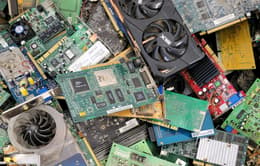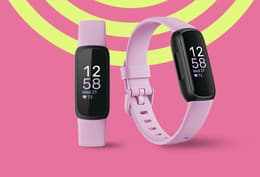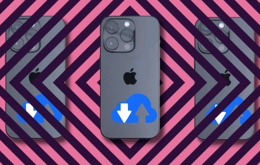
If you’re a Windows user, find out what Microsoft writing off Windows 10 devices means for you, and how this decision will cause mass e-waste.
Is Microsoft about to trigger what advocacy group PIRG is calling “the single biggest jump in junked computers ever”? The answer seems to be a resounding yes.
In October 2025, the end of support for Windows 10 will come into full effect. That means no more free security or feature updates or even technical assistance. Why not just upgrade to Windows 11, you ask? Well, the US tech giant has put stringent technical requirements in place in order for devices to be able to run its new operating system (OS).
Kewin Charron, Back Market’s senior lead refurbishment operations manager, explains how these “tech gatekeepers” are mainly hardware specs and built-in security, such as newer generation CPUs (the main chip that runs the OS and apps), TPM 2.0 (a security component that protects user identity and encrypts data), and a minimum of 4GB of RAM.
Popular models that don’t meet these requirements, and therefore can’t be upgraded, include the Microsoft Surface Pro 5, the Lenovo ThinkPad T460 and T470, and the HP EliteBook 840 G3 and G4. Add them to the other models on the list and you potentially get as many as 400 million laptops and computers at risk of becoming obsolete overnight.

Popular models that don’t meet update requirements may be rendered as E-waste, an ecological nightmare for communities worldwide.
In the Right to Repair activism space, Public Interest Research Group (PIRG), has been running a campaign calling on Microsoft to extend its support for Windows 10 since 2023, speaking out publicly against the company’s decision, building support online, and even visiting Microsoft’s HQ to hand deliver a 20,000-strong signature petition. “There’s no way Microsoft doesn’t understand the amount of waste that’s associated with its decision. It’s totally unprecedented in its scale,” says Nathan Proctor, senior director of the U.S. PIRG campaign for the right to repair.
“These devices could have another five or ten years left in them, [but unless you upgrade] you’re met with the threat of losing everything to a no longer supported operating system,” adds Oliver Taylor, operations director at UK-based IT recycling and refurbishment company Zero Waste Tech. “It’s not going to be patched for viruses; you won’t get any support.” As a result, individuals and businesses are rushing to buy new Windows 11-compliant alternatives, leaving soon-to-be-obsolete devices behind and creating a looming surge in e-waste.
What happens to old computers?
Market-enforced obsolescence isn’t new. Older iPhone models (up to the iPhone 8) cannot be upgraded to Apple’s newest iOS, while Microsoft has ended service for other OS including Windows 7 and 8.1 in the past. However, the proportion of devices still reliant on older Apple and Windows OS were much smaller than it is for Windows 10.
So, where will these hundreds of millions of devices go? There are several avenues for old computers: resale, refurbishment (which can entail software and hardware improvements), and recycling – which can mean a few different things. At Zero Waste Tech, Taylor explains that newer devices are resold; older devices are refurbished; and those beyond repair are dismantled into their component parts and then recycled.
Yet some other recycling companies send computers straight to be shredded for material refurbishment, taking usable devices out of the loop. “When [Windows 10] devices get to their lowest price, they will be too cheap to work with - no room for margins for refurbishment,” agrees Marek Albert, marketplace manager at Slovakian refurbishing company, Furbify.
"It’s ecologically senseless" - Nina Quellier, Back Market Global Head of Brand Activism
Exporting the problem
As electronic waste (e-waste) balloons, so do e-waste exports. Currently 5.1 billion kilograms of e-waste is shipped between countries annually, aided by regulatory oversights such as the Basel Convention loophole, which essentially means broken tech can be exported without consent from the receiving nation if it’s marked for repair or reuse - therefore not technically considered to be waste.
With the majority handled in low- and lower-middle-income countries - such as Ghana, India, and Thailand - that have no developed e-waste management infrastructure, the recyclers and local communities become exposed to the hazardous components inside. For example, in Agbogbloshie, Ghana, which processes over 15,000 tons of e-waste per year, eggs laid by chickens that forage in the area were found to contain dangerously high concentrations of chemicals [including the highly toxic chlorinated dioxins].
Western waste puts citizens of other countries into harm’s way, and a sudden glut of unnecessarily obsolete devices could exacerbate the influx. However, e-waste policy and sustainability expert T.S. Krishnan stresses that despite all these challenges, so-called ‘informal recyclers’ are vital for repurposing what would otherwise have gone to waste. Krishnan argues that they should be supported rather than simply shut down.
PIRG’s Proctor adds that extracting minerals for new tech also poses major health risks to communities, so we cannot overlook one hazardous industry in favour of another. Rather, we have to tackle the problem wholesale.
"Companies would like us to constantly refresh our devices, and we need to get off that toxic cycle ASAP." - Nathan Proctor, US PIRG representative
What are the alternatives?
“[We must reject] any system that pushes perfectly working devices to become obsolete and prematurely discarded as waste,” adds Quellier. That can start with installing alternative OS such as ChromeOS Flex or Linux to keep Windows 10 devices in the loop, while avoiding waste and the need to extract yet more materials to produce yet more tech. But this can still feel like a complicated process to the everyday tech user.
To overcome this, Back Market is launching an ‘obsolete’ category allowing consumers to buy Windows 10 devices with the support of transparent labelling and DIY tips, so they know exactly what they’re purchasing. It gives consumers confidence to try a new sustainable approach and it provides a resale ecosystem for those who would rather switch to a Windows 11-compatible device.
Resellers, recyclers, and refurbishers can take a similar approach, says Whirl Recycling’s Adrian Saunders. “The best case is we extend the life of these devices. That means upgrading them where possible or repurposing them for tasks that don’t need constant updates… keeping them out of the waste stream.”
Policymakers can step in, too. “By pushing manufacturers to design products for longer use, repairability, and upgradeability - including software support - regulations may help extend the functional life of IT equipment and support a more circular economy,” says Augustin Becquet, chairman of refurbishment industry association, EUREFAS.
In the short term, however, it’s Microsoft that has the biggest role to play here. If it reverses its decision, it could save millions of devices from becoming waste. But absent a corporate U-turn, consumers and circular communities should seek to value Windows 10 devices in any way possible. As US PIRG representative Nathan Proctor aptly concludes, “Companies would like us to constantly refresh our devices, and we need to get off that toxic cycle ASAP.”















